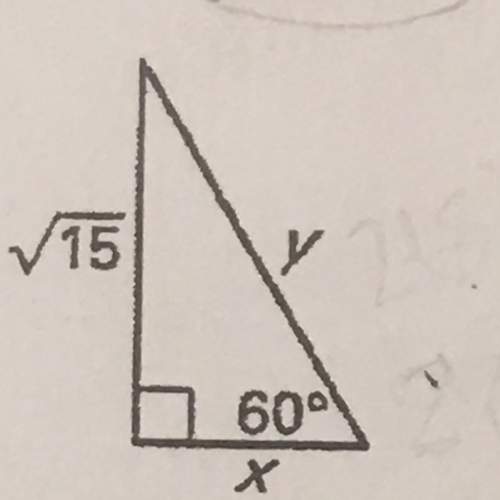
Mathematics, 28.03.2020 19:10 Briannadavis03
Savannah has a water bottle that is a rectangular prism. The bottle measures 7 centimeters by 5 centimeters by 18 centimeters and she filled it completely with water. Then she drank 1/4 of the volume water in her water bottle. How many cubic centimeters hwere left in the bottle

Answers: 1


Another question on Mathematics

Mathematics, 22.06.2019 00:30
The length of a rectangle plus its width is 24 cm. the area is 143 square cm. what are the length and width of the rectangle?
Answers: 1

Mathematics, 22.06.2019 04:20
When booking personal travel by air, one is always interested in actually arriving at one’s final destination even if that arrival is a bit late. the key variables we can typically try to control are the number of flight connections we have to make in route, and the amount of layover time we allow in those airports whenever we must make a connection. the key variables we have less control over are whether any particular flight will arrive at its destination late and, if late, how many minutes late it will be. for this assignment, the following necessarily-simplified assumptions describe our system of interest: the number of connections in route is a random variable with a poisson distribution, with an expected value of 1. the number of minutes of layover time allowed for each connection is based on a random variable with a poisson distribution (expected value 2) such that the allowed layover time is 15*(x+1). the probability that any particular flight segment will arrive late is a binomial distribution, with the probability of being late of 50%. if a flight arrives late, the number of minutes it is late is based on a random variable with an exponential distribution (lamda = .45) such that the minutes late (always rounded up to 10-minute values) is 10*(x+1). what is the probability of arriving at one’s final destination without having missed a connection? use excel.
Answers: 3

Mathematics, 22.06.2019 05:20
Customers are used to evaluate preliminary product designs. in the past, 93% of highly successful products received good reviews, 51% of moderately successful products received good reviews, and 14% of poor products received good reviews. in addition, 40% of products have been highly successful, 35% have been moderately successful and 25% have been poor products. round your answers to four decimal places (e.g. 98.) what is the probability that a product attains a good review? (b) if a new design attains a good review, what is the probability that it will be a highly successful product? (c) if a product does not attain a good review, what is the probability that it will be a highly successful product?
Answers: 1

Mathematics, 22.06.2019 08:30
Explain five guidelines to follow when shopping from home
Answers: 2
You know the right answer?
Savannah has a water bottle that is a rectangular prism. The bottle measures 7 centimeters by 5 cent...
Questions



Chemistry, 14.12.2021 01:00

English, 14.12.2021 01:00


History, 14.12.2021 01:00

Mathematics, 14.12.2021 01:00

Mathematics, 14.12.2021 01:00

Chemistry, 14.12.2021 01:00



Biology, 14.12.2021 01:00


Mathematics, 14.12.2021 01:00

Social Studies, 14.12.2021 01:00

Business, 14.12.2021 01:00


French, 14.12.2021 01:00

Mathematics, 14.12.2021 01:00




